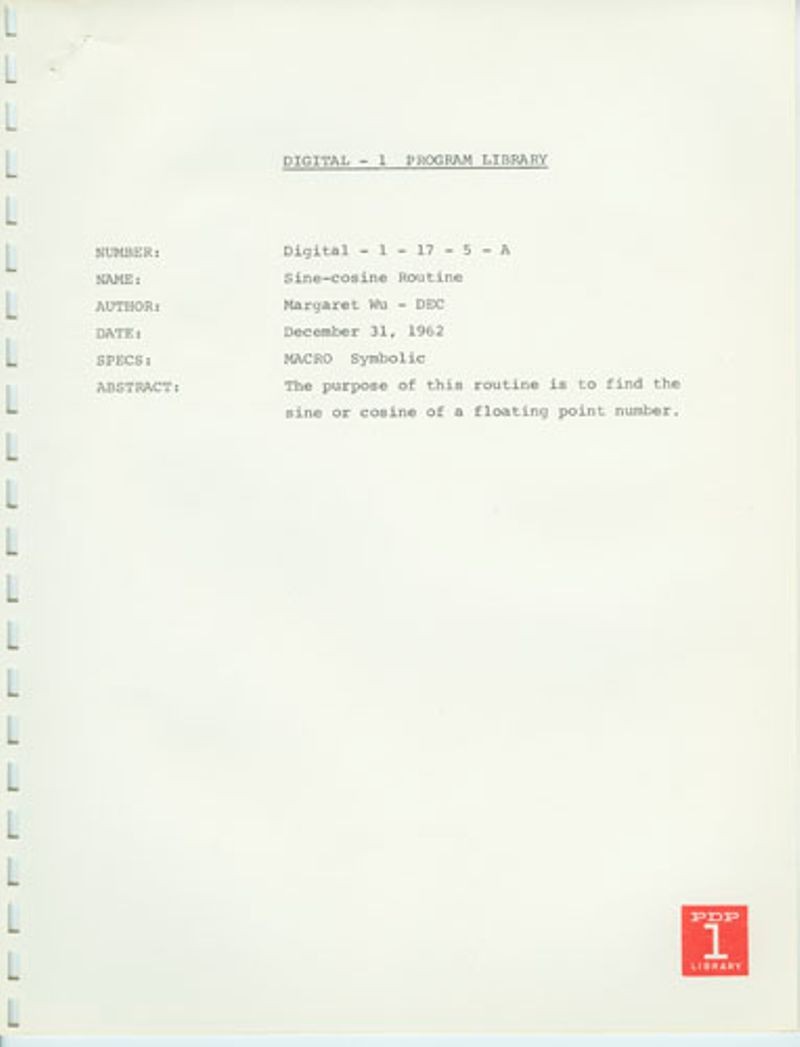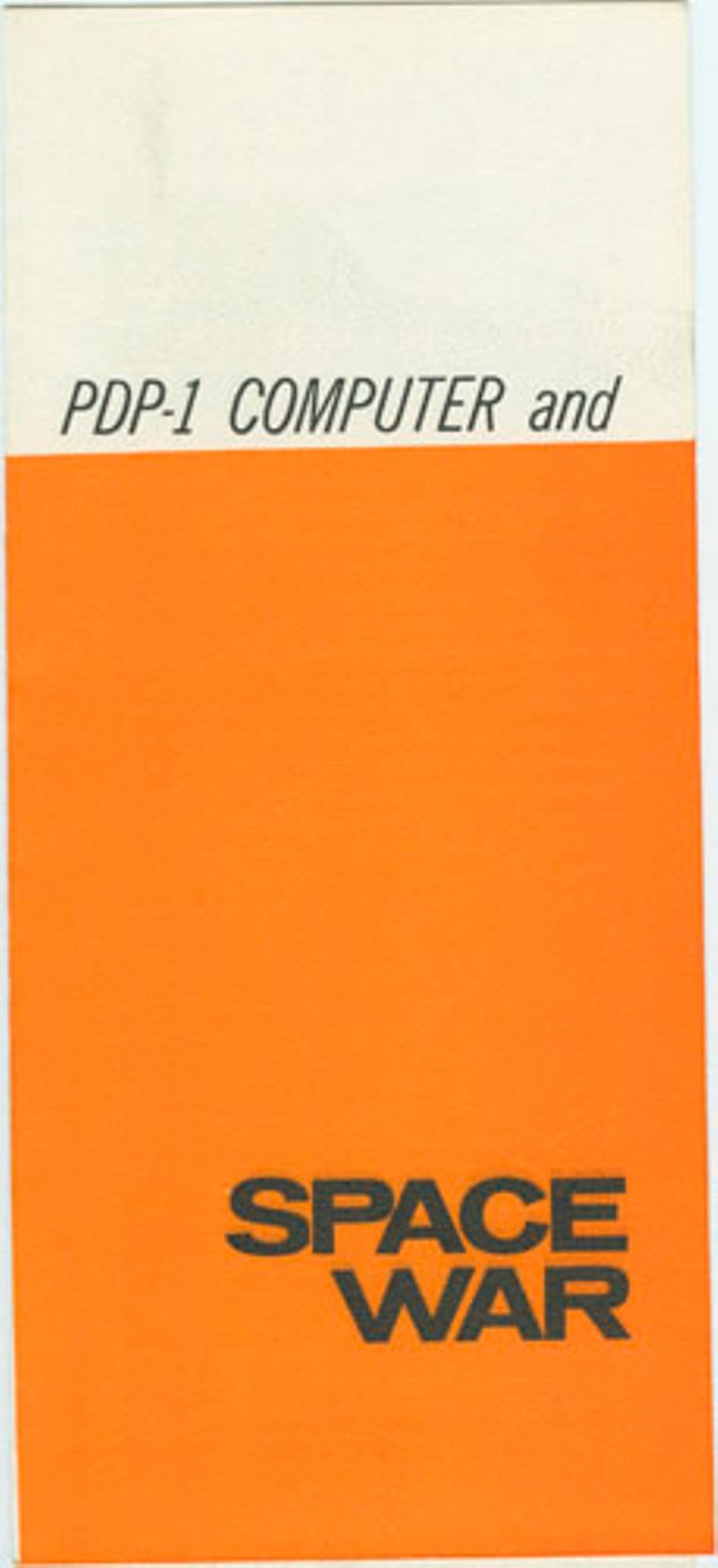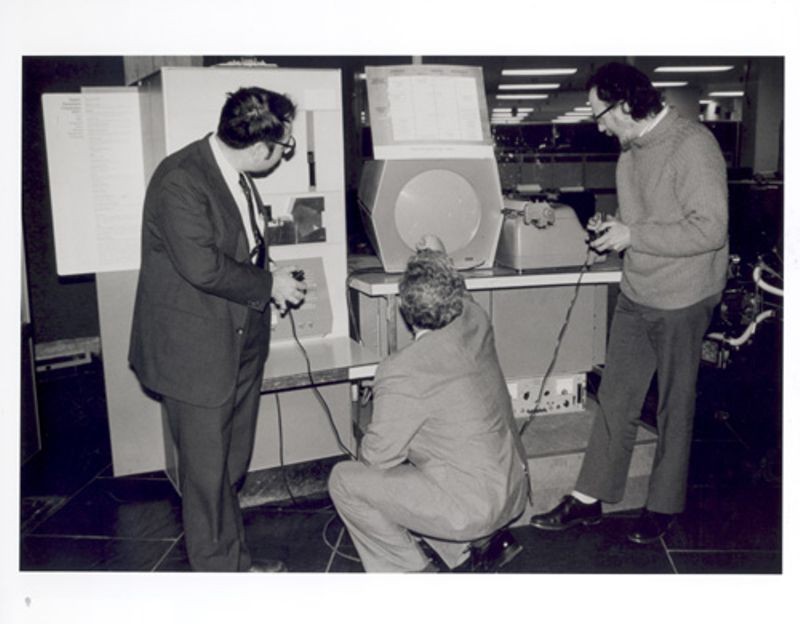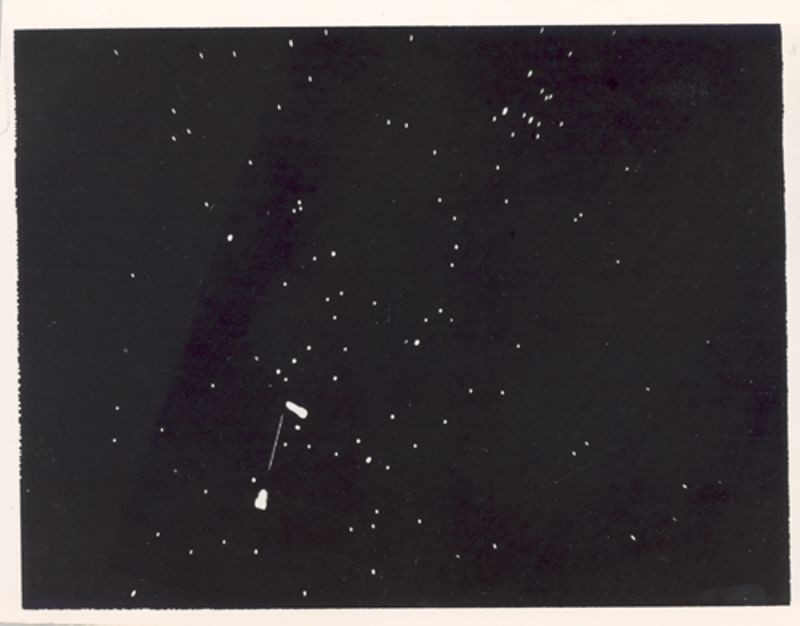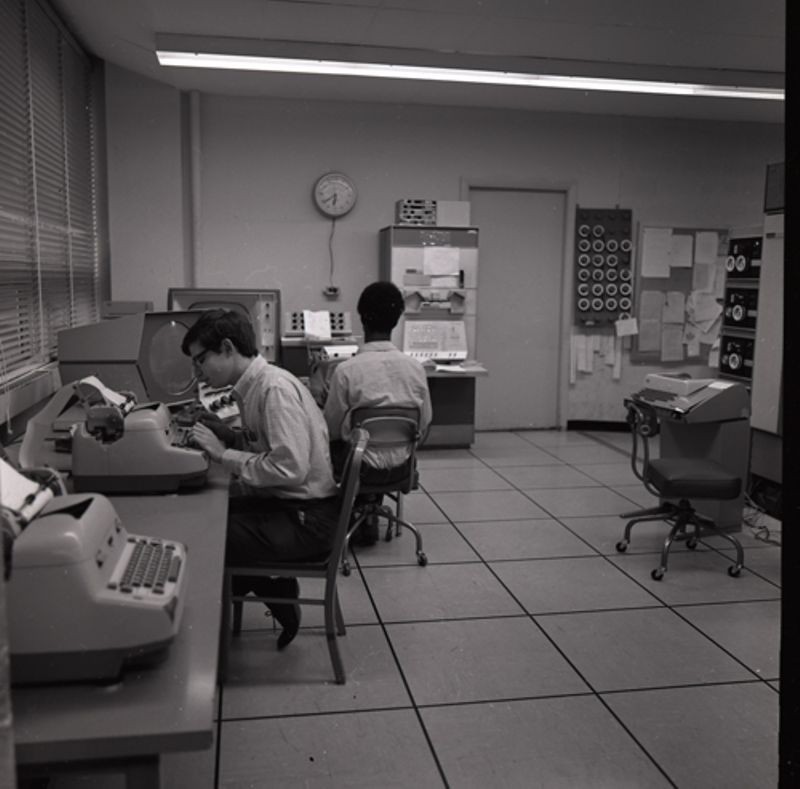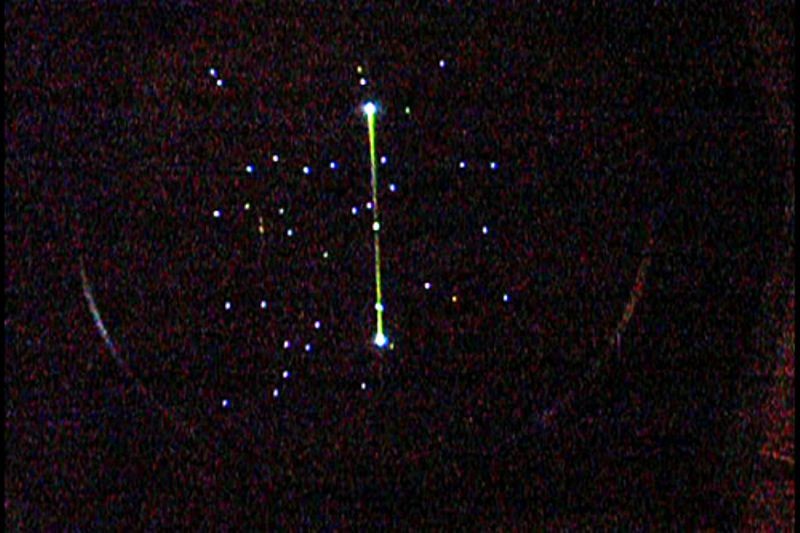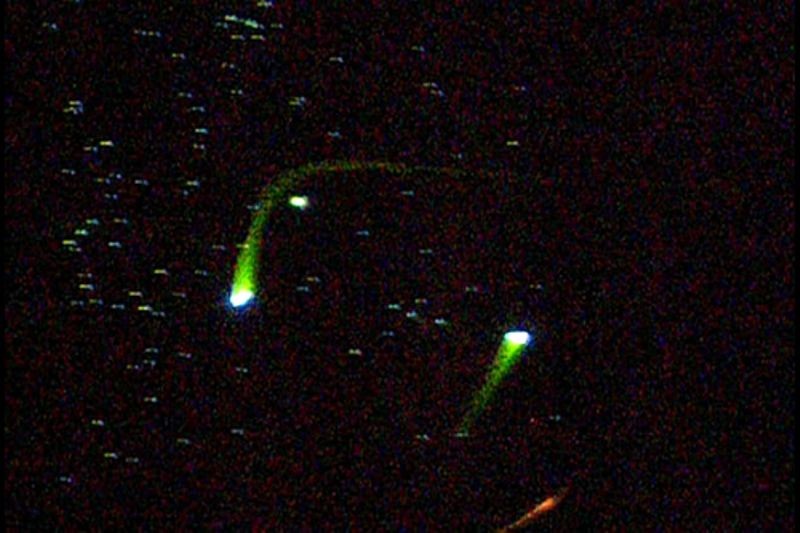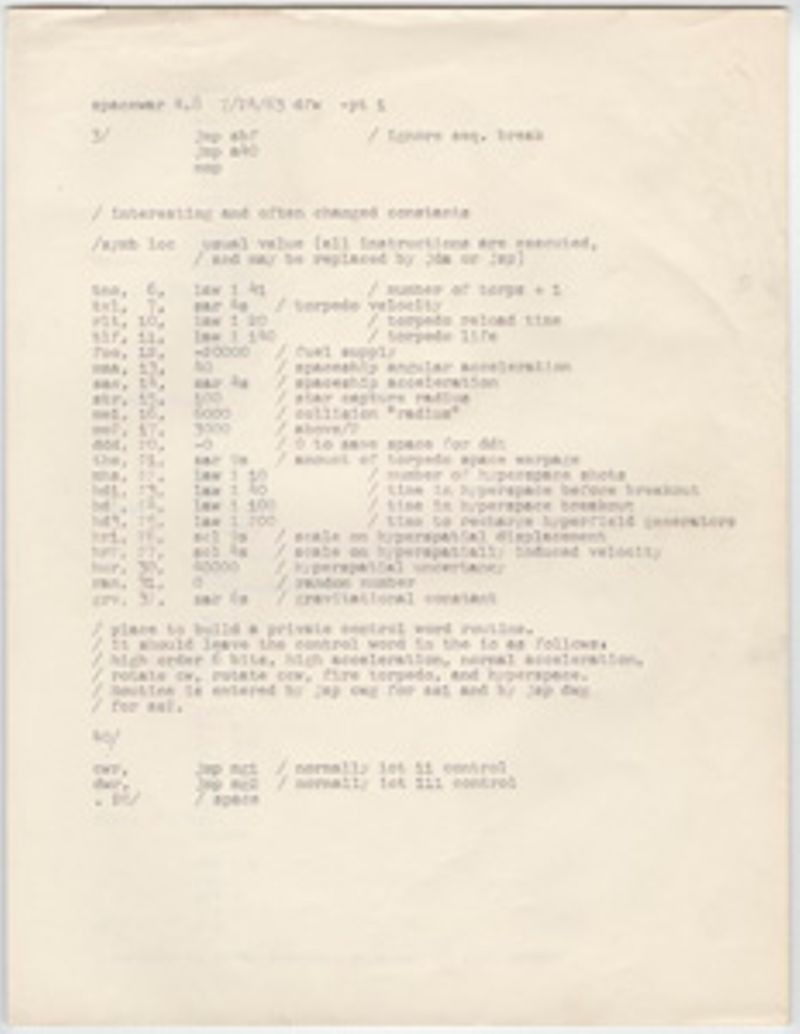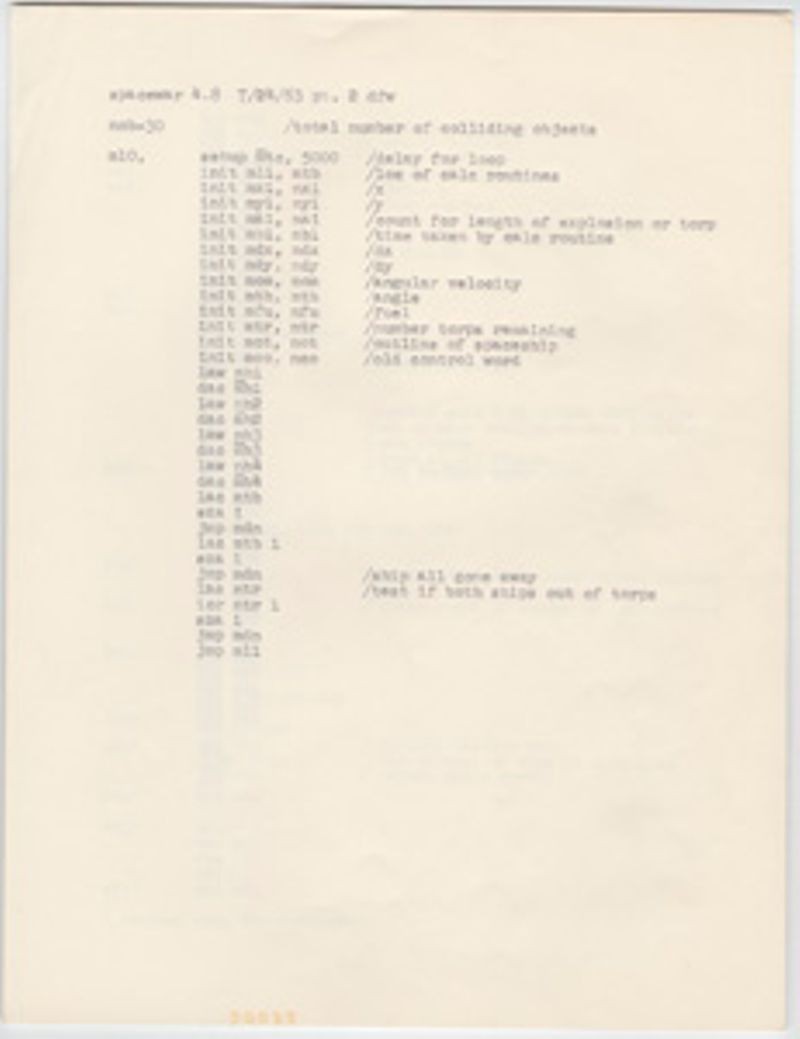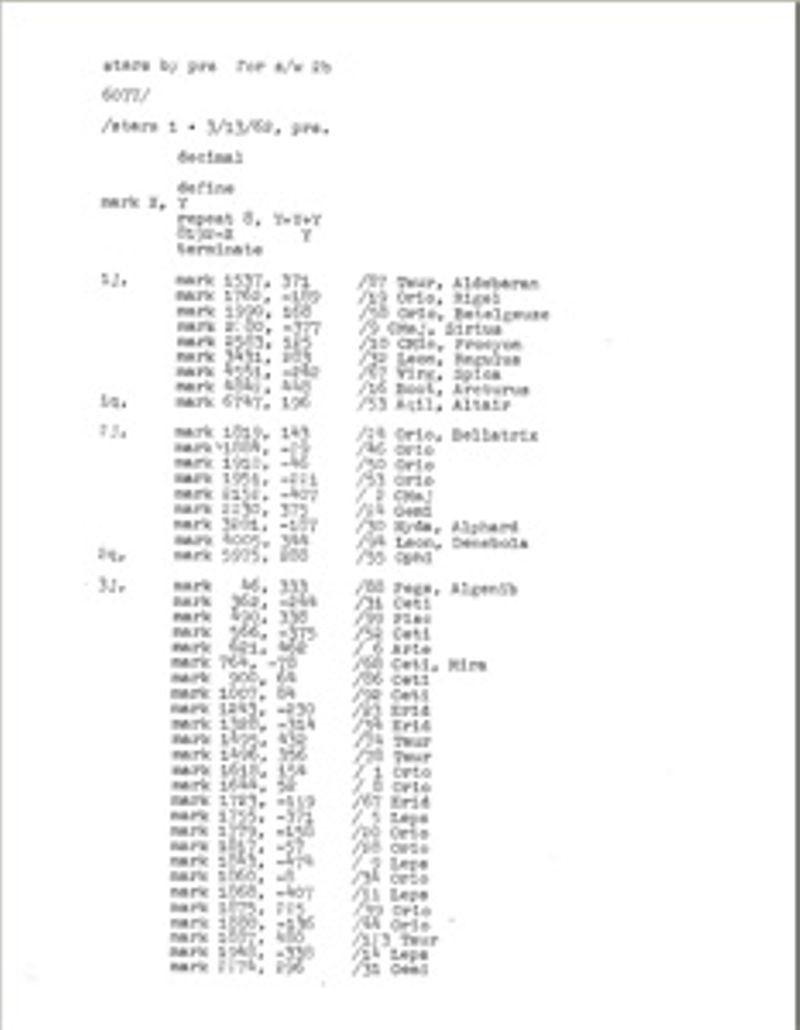Spacewar!

Though the graphical capabilities of the PDP-1 had serious applications, it was the game Spacewar! that has made the PDP-1 famous. Spacewar! was initially conceived by Steve Russell, Martin Graetz and Wayne Wiitanen in 1961, and largely inspired by the pulp science fiction novels of E. E. "Doc" Smith's Lensman series. The first version was written by Steve Russell with significant improvements made in the spring of 1962 by Peter Samson, Dan Edwards and Martin Graetz. Much of this work was performed under the impressive-sounding “Hingham Institute Space Warfare Study Group,” which was in fact Russell’s residence.
The early MIT users—some were students, some were MIT employees, some were ‘just at MIT’ (i.e. hanging around)—got access to the PDP-1 via Professor Jack Dennis who had taken delivery of a PDP-1 as a hand-me-down from BBN. Dennis allowed his students great latitude in using the machine, who returned the favor by developing highly-innovative programs for it.
Spacewar! has two players—each in command of a spaceship—who are each trying to destroy the other against an astronomically correct star field as well as other characteristics that reflect real-world physics. The game made use of the PDP-1’s easy I/O structure to add game controllers and, soon after initial creation, a surplus jet fighter joystick.
Spacewar! was frequently used in demonstrations to potential customers as a way of showing the power of this unusually-small computer. For example, Spacewar! required over 100,000 calculations per second to compute ship motion, gravity, user control inputs and the relative position of stars and the sun and the computer’s CPU sent over 20,000 points per second to the Type 30 display while running the game. With its companion light pen, non-specialist users could interact easily with the computer—a form of interactivity Digital pioneered with the PDP-1.



